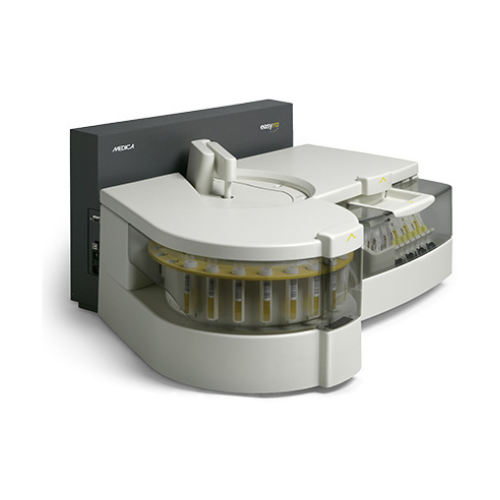For Business Use Only. Does Not Ship to Residential Addresses. For use inside an Analyzer, Sold Separately.
B84493 Beckman Access Sensitive Estradiol Reagent, 100 Determinations, 2 x 50 Tests
Product Code: B84493
Manufacturer: Beckman Coulter
Shipping Weight: 10.00lbs (4.54kg)
Specifications
Brand: Access®
Manufacturer: Beckman Coulter
Country of Origin: Ireland
Application: Reagent
Container Type: Well
For Use With: For use with Access Immunoassay Systems
Number of Tests: 2 X 50 Tests
Sample Type: Human Serum / Plasma Sample
Test Method: Competitive Immunoassay
Test Name: Estradiol
Test Type: Reproductive Endocrinology Assay
Intended Use
The Access Sensitive Estradiol assay is a paramagnetic particle, chemiluminescent immunoassay for the quantitative determination of estradiol levels in human serum and plasma using the Access Immunoassay Systems.
Summary and Explanation
Estradiol (17β-estradiol) is a natural estrogen with a molecular mass of 272.4 daltons. Most circulating estradiol is strongly bound to sex hormone binding protein and loosely bound to albumin. It is estimated that only 1-5% of estradiol is free (unbound). In non-pregnant women, estradiol is secreted by the ovary and the corpus luteum. The adrenals and testes (in men) are also believed to secrete minute amounts of estradiol.
Estradiol levels are lowest at menses and into the early follicular phase and rise in the late follicular phase to a peak just prior to the hLH (human Luteinizing Hormone) surge, initiating ovulation. As the hLH peaks, the levels of estradiol decrease before rising again in the luteal phase. Endometrial growth is stimulated by estradiol and progesterone (secreted by the corpus luteum) in preparation for implantation of a fertilized egg. If conception does not occur, the secretion of estradiol and progesterone by the corpus luteum decreases, initiating menses.
Levels of estradiol are used to monitor ovulatory status. Because estradiol levels reflect follicular maturation, the measurement of estradiol as cited in the scientific literature has been used as a valuable tool in the assessment of sexual development in children, anovulation and/or amenorrhea, polycystic ovary syndrome and causes of infertility and menopause.
During in vitro fertilization, estradiol levels are routinely measured after gonadotropin stimulation to determine follicular status. Estradiol also affects areas other than reproductive tissues such as cardiovascular, immune and central nervous systems. For this reason estrogen has been investigated in the pathogenesis of cardiovascular disease, hormone-dependent cancers and osteoporotic fracture. Abnormally high levels in males are indicative of feminizing syndromes such as gynecomastia.











